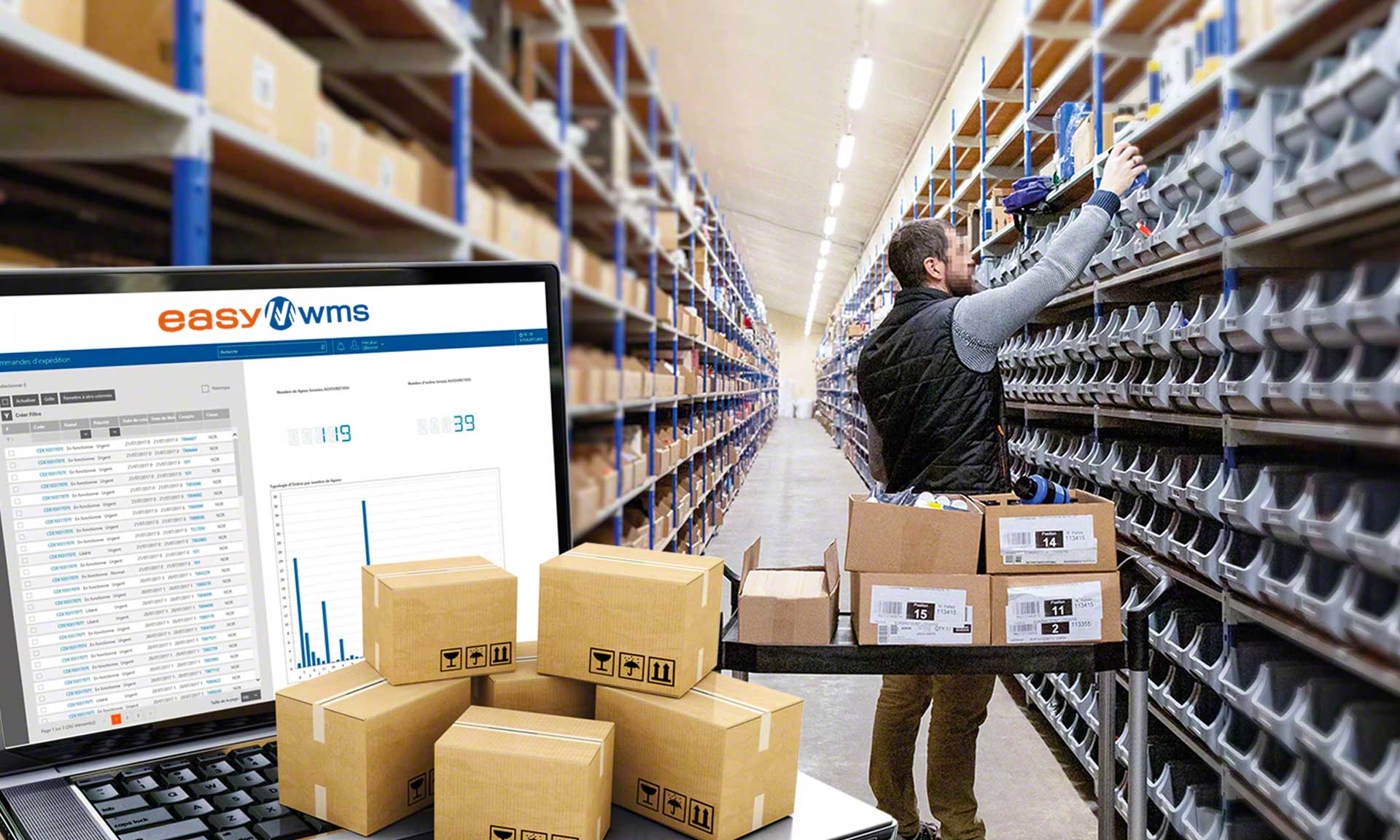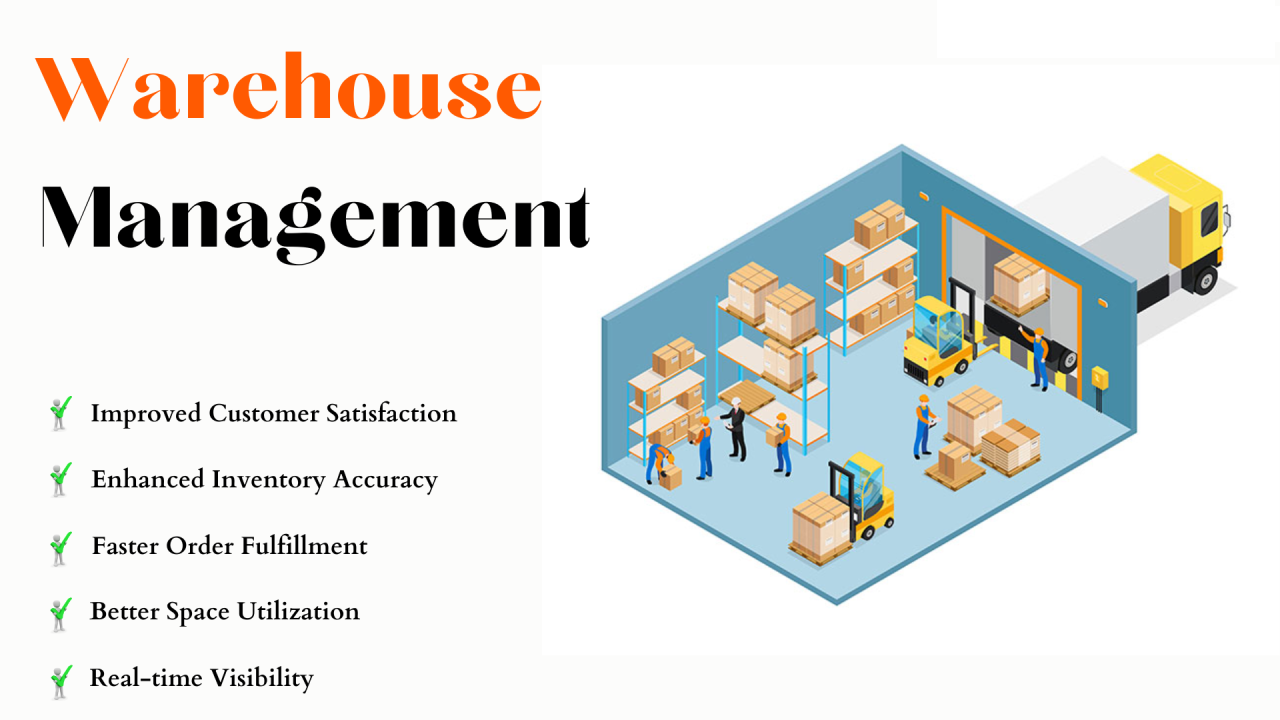
In today's dynamic market, efficient Warehouse Managementis the linchpin for businesses aiming to thrive. Imagine a seamlessly orchestrated ballet of inventory, operations, and logistics, all choreographed to perfection. That's the power of advanced warehouse management systems. They're the heartbeat of modern enterprises, maximizing space utilization, optimizing inventory flow, and orchestrating a symphony of processes with precision.
With cutting-edge technologies like RFID tagging, automation, and AI-powered analytics, warehouse management isn't merely about storing goods; it's about harnessing data-driven insights to forecast demand, minimize errors, and enhance decision-making. Experience the evolution of logistics firsthand and unlock the potential of your warehouse with tailored, innovative management solutions that redefine efficiency and profitability.
What Is Warehouse Management? Benefits, Processes, & Strategies
Warehouse managementis the process of overseeing the activities within a warehouse to ensure efficient storage, handling, and distribution of goods or products. The goal of effective warehouse management is to maximize the use of available space, minimize handling costs, and streamline operations to meet customer demands effectively.
Here Are Some Of The Benefits Of Warehouse Management:
- Reduced costs -Warehouse management can help reduce costs by optimizing the use of space, labor, and equipment. It can also help to reduce inventory shrinkage and improve accuracy.
- Improved efficiency -Warehouse management can help improve efficiency by streamlining processes and reducing errors. This can lead to faster order fulfillment and improved customer satisfaction.
- Increased visibility -Warehouse management can help increase visibility into inventory levels and warehouse operations. This can help to improve decision-making and reduce the risk of stockouts.
Here Are Some Of The Processes Involved In Warehouse Management:
- Receiving -This is the process of checking in and logging incoming items. It is important to verify that you are receiving the right quantity, in the right condition, at the right time.
- Put-away -This is the process of moving items from the receiving dock to their correct storage locations. It is important to store items in a way that is easy to access and that minimizes the risk of damage.
- Storage -This is the process of safely storing inventory. It is important to use the right storage methods for the type of product being stored.
- Picking -This is the process of collecting the items needed to fulfill sales orders. It is important to pick items in a way that is efficient and accurate.
- Packing -This is the process of preparing items for shipment. It is important to pack items securely and in a way that protects them from damage.
- Shipping -This is the process of sending items to customers. It is important to ship items on time and in the correct condition.
Here Are Some Strategies For Improving Warehouse Management:
- Optimize layout and organization - design the warehouse layout to minimize unnecessary movement and maximize storage capacity. Place high-demand items near packing stations and prioritize easy access to frequently picked products.
- Implement automation -Automate as much as possible to reduce the amount of manual labor required. This can include automating tasks such as order processing, retrieval, or even some aspects of picking.
- Use technology -Use technology to improve visibility into inventory levels and warehouse operations. This can include using a warehouse management system (WMS) or other software solutions.
- Train employees -Train employees on how touse warehouse management systems and other software solutions. Train them on how to perform their jobs efficiently and safely.
- Monitor performance -Monitor warehouse performance on a regular basis. This will help to identify areas for improvement and ensure that warehouse management strategies are effective.
By implementing these strategies, businesses can improve the efficiency and effectiveness of their warehouse operations. This can lead to reduced costs, improved customer satisfaction, and increased profitability.
How Warehouse Management System Can Improve Efficiency?
WMS systems can be used to improve efficiencyand accuracy in a variety of warehouse operations. For example, they can be used to:
- Track the movement of goods from the receiving dock to the shipping dock
- Optimize picking routes to minimize travel time
- Manage inventory levels to prevent stockouts and overstock
- Generate shipping labels and track shipments
- Manage labor costs by tracking employee productivity
WMS Systems Can Also Be Used To Improve Customer Satisfaction By:
- Providing real-time visibility into inventory levels
- Enabling faster order fulfillment
- Reducing the risk of errors in picking and packing
- Providing accurate shipping information to customers
If You Are Considering Implementing A WMS System, There Are A Few Things You Should Keep In Mind:
- The size and complexity of your warehouse
- The type of goods you store
- Your budget
- Your IT infrastructure
Once you have considered these factors, you can start to research different WMS systems and select the one that is right for your business.
10 Principles Of Warehouse Management
Warehouse management is a crucial aspect of supply chain operations, ensuring the efficient storage, handling, and distribution of goods. Effective warehouse management adheres to several key principles that aim to optimize operations, minimize costs, and enhance customer satisfaction. Here's a comprehensive overview of the fundamental principles of warehouse management:
1. Customer Satisfaction -Prioritizing customer satisfaction is at the heart of effective warehouse management. This involves fulfilling orders accurately and on time, minimizing errors, and maintaining open communication with customers to address any concerns promptly.
2. Performance Monitoring and Continuous Improvement -Continuously monitoring warehouse performance metrics, such as order fulfillment time, inventory accuracy, and labor productivity, identify areas for improvement and drive continuous enhancement of warehouse operations.
3. Safety and Compliance -Maintaining a safe and compliant warehouse environment is paramount. This involves implementing safety protocols, conducting regular safety audits, adhering to regulatory requirements, and providing personal protective equipment (PPE) for employees.
4. Technology Adoption -Embracing technology can significantly enhance warehouse operations. Implementing a warehouse management system (WMS) provides real-time visibility into inventory levels, optimizes picking routes, automates tasks, and improves overall warehouse efficiency.
5. Labor Management and Training -Effective labor management ensures that warehouse personnel are well-trained and equipped to handle tasks efficiently and safely. This involves providing comprehensive training programs, implementing performance metrics, and promoting a culture of continuous improvement.
6. Shipping and Delivery Management -Efficient shipping and delivery management ensure that orders are dispatched promptly and accurately. This involves maintaining real-time shipping visibility, integrating with shipping carriers, and implementing accurate shipping documentation to facilitate timely deliveries.
7. Picking and Packing Optimization -Picking and packing processes directly impact order fulfillment speed and accuracy. Optimizing these processes involves implementing picking routes that minimize travel time, utilizing picking technology such as pick-to-light systems, and ensuring proper packing procedures to protect products during shipment.
8. Receiving and Put-away Processes -Efficient receiving and put-away processes ensure that incoming goods are promptly checked in, logged, and moved to their designated storage locations. This involves establishing clear receiving procedures, utilizing barcode scanning to verify item details, and optimizing put-away routes to minimize travel time.
9. Inventory Management -Maintaining accurate inventory levels is essential to prevent stockouts and overstocks. This involves implementing robust inventory tracking systems, utilizing barcode scanning technology, conducting regular inventory audits, and establishing reorder points to ensure timely replenishment.
10. Organization and Layout -A well-organized warehouse layout minimizes unnecessary movement, maximizes storage capacity, and facilitates efficient product retrieval. This involves strategically positioning high-demand items near packing stations, prioritizing easy access to frequently picked products, and implementing clear labeling systems for aisles, racks, and storage bins.
What Is An Example Of A Warehouse Management System?
Here are some examples of popular warehouse management systems:
- Blue Yonder Luminate Logistics -Blue Yonder Luminate Logistics is a WMS solution that is designed for businesses that are looking for a solution that can help them to optimize their supply chain. It offers a wide range of features, including inventory management, order fulfillment, transportation management, and analytics.
- Fishbowl Inventory -Fishbowl Inventory is a WMS solution that is designed for small and medium-sized businesses. It is a cost-effective solution that is easy to use and can be integrated with Quickbooks.
- Manhattan SCALE -Manhattan SCALE is a WMS solution that is known for its ease of use and its ability to integrate with other enterprise systems. It is a good option for businesses that are looking for a solution that is easy to implement and maintain.
- Oracle Warehouse Management Cloud (WMS Cloud) -Oracle WMS Cloud is a cloud-based WMS solution that is designed for businesses of all sizes. It is a scalable and flexible solution that can be easily adapted to the specific needs of a business.
- SAP Extended Warehouse Management (EWM) -SAP EWM is a comprehensive WMS solution that is suitable for large and medium-sized businesses. It offers a wide range of features, including inventory management, order fulfillment, labor management, and reporting.
Implement A Warehouse Control System (WCS)
Implementing a Warehouse Control System (WCS)involves a comprehensive process that encompasses planning, selection, implementation, and ongoing maintenance. Here's a detailed breakdown of the steps involved:
1. Planning Phase
a. Define Requirements -Clearly identify the specific needs and objectives for implementing a WCS. Consider factors such as warehouse size, product types, order volume, and integration with existing systems.
b. Evaluate Budget -Determine a realistic budget for the WCS project, including software licensing, hardware costs, implementation services, and ongoing maintenance expenses.
c. Establish Project Team -Assemble a dedicated team with expertise in warehouse operations, IT infrastructure, and project management to oversee the implementation process.
2. Selection Phase
a. Research WCS Solutions -Conduct thorough research to identify potential WCS vendors and compare their offerings. Evaluate factors such as functionality, scalability, ease of use, integration capabilities, and vendor reputation.
b. Request for Proposal (RFP) -Issue an RFP to shortlisted vendors, outlining the specific requirements and expectations for the WCS solution.
c. Vendor Evaluation -Evaluate vendor proposals based on their understanding of the requirements, proposed solution, pricing, and implementation plan.
d. Proof of Concept (POC) -Conduct a POC with the selected vendor to assess the functionality and compatibility of the WCS solution within the warehouse environment.
3. Implementation Phase
a. Data Migration -Extract and migrate relevant data from existing systems into the WCS, ensuring data integrity and accuracy.
b. Hardware Installation and Configuration -Install and configure necessary hardware components, such as barcode scanners, RFID tags, and wireless access points, to support the WCS.
c. System Configuration -Configure the WCS software according to the specific warehouse layout, product types, and operational workflows.
d. Integration with Existing Systems -Establish seamless integration between the WCS and existing ERP, inventory management, and shipping systems to ensure a cohesive data flow.
e. User Training and Testing -Provide comprehensive training to warehouse personnel on the WCS functionalities, procedures, and safety protocols. Conduct thorough testing to identify and resolve any issues before go-live.
4. Ongoing Maintenance And Support
a. Monitoring and Performance Optimization -Continuously monitor WCS performance metrics to identify areas for improvement and optimize system efficiency.
b. Regular Updates and Patches -Implement software updates and patches promptly to address any bugs or security vulnerabilities.
c. Ongoing Support and Training -Provide ongoing technical support to warehouse personnel and offer refresher training sessions to ensure continuous proficiency.
d. Performance Reviews and Continuous Improvement -Conduct regular performance reviews to evaluate the effectiveness of the WCS and identify opportunities for further improvement.
Frequently Asked Questions About Warehouse Management
What Is The Basic Warehouse Management?
Warehouse management refers to the oversight of operations in a warehouse. This includes receiving, tracking, and storing inventory, as well as training staff, managing shipping, workload planning, and monitoring the movement of goods.
What Are The 7 Key Warehouse Processes?
The fundamental warehouse processes comprise receiving, putaway, inventory management, product slotting, picking, packing, kitting, and shipping. Optimizing these processes will allow you to streamline your warehouse operation, enhance product flow, reduce cost and errors, and achieve a higher perfect order rate
What Is The Role For Warehouse Management?
Warehouse managers supervise deliveries of goods into warehouses and ensure products are accounted for, are stored safely and securely, and are despatched efficiently to customers. They also manage warehouse staff, which includes ensuring that they are working safely.
Conclusion
The significance of warehouse management cannot be overstated in today's hypercompetitive business landscape. It stands as the backbone of a streamlined supply chain, wielding the power to elevate operational excellence and bolster customer satisfaction. Embracing sophisticated technologies and strategic methodologies isn't just an option; it's the key to unlocking new efficiencies and staying ahead in a rapidly evolving market.
The future of warehouse management lies in the continued integration of innovation and intelligence. Embracing automation, harnessing predictive analytics, and prioritizing adaptability will be paramount. As industries evolve, those who harness the potential of these advancements will not only thrive but also set the benchmark for operational excellence.


